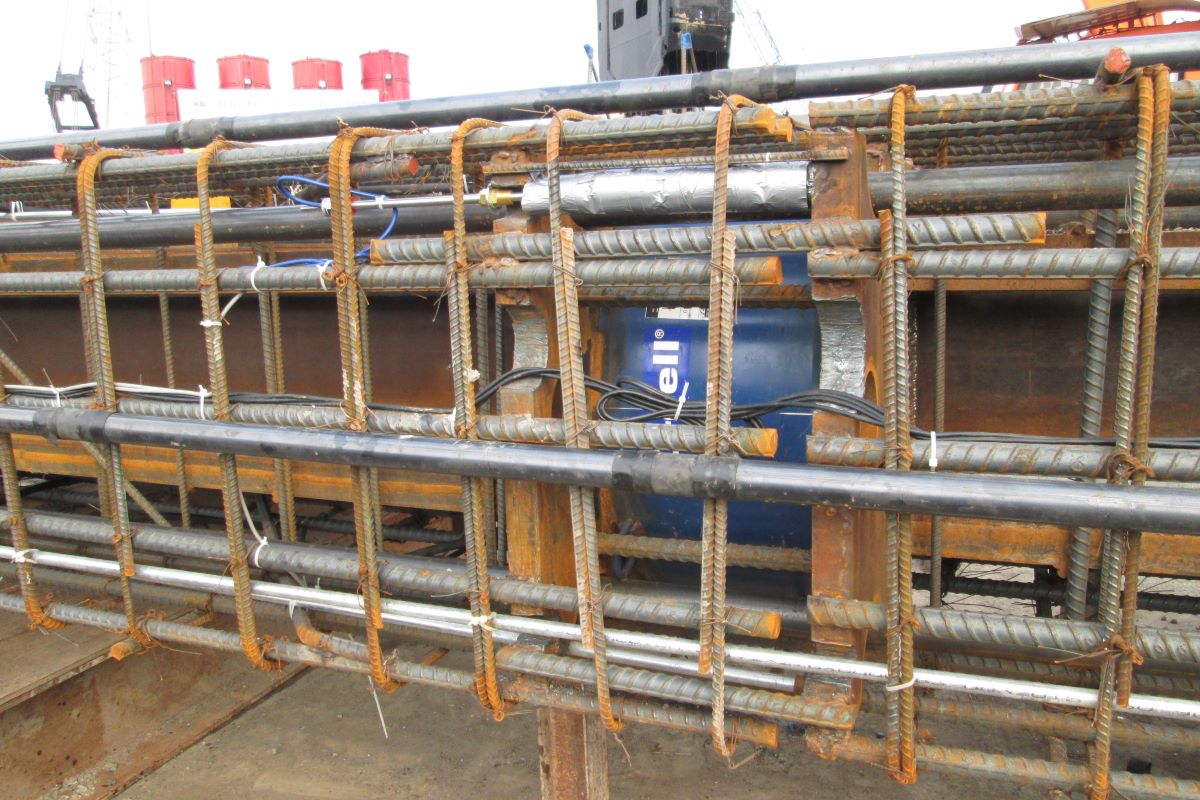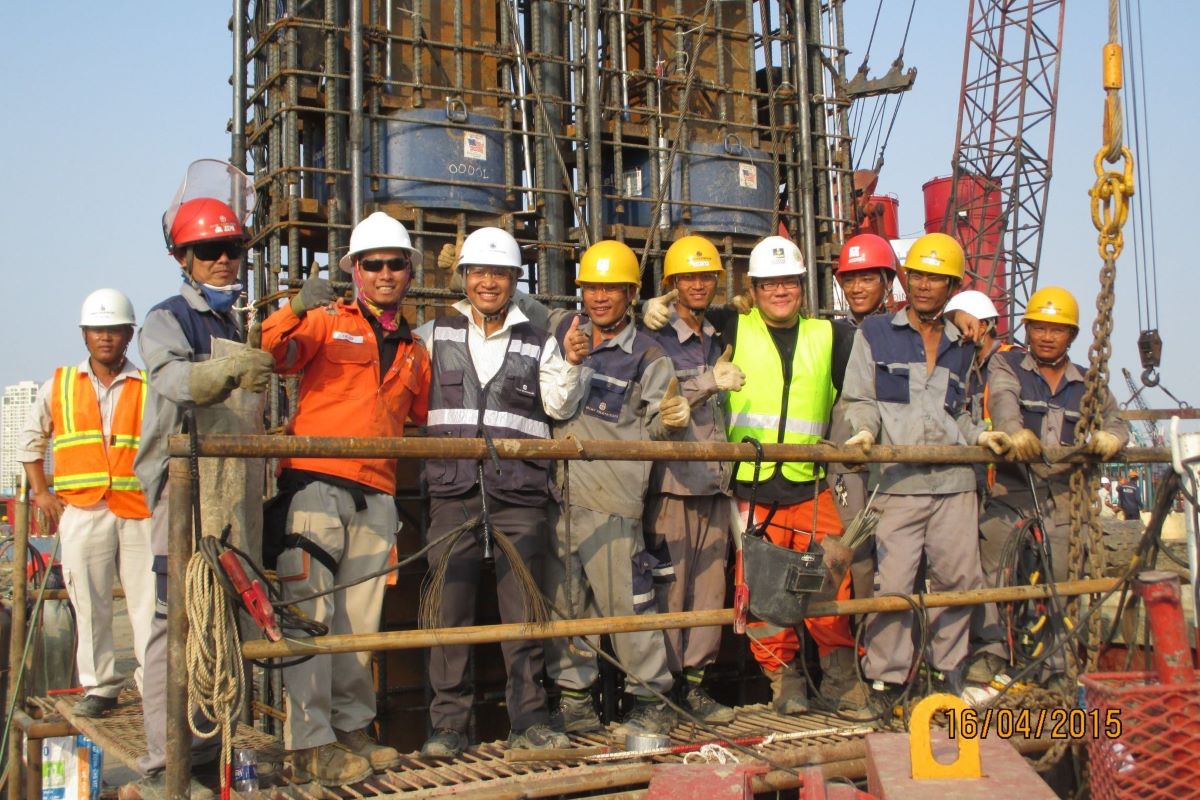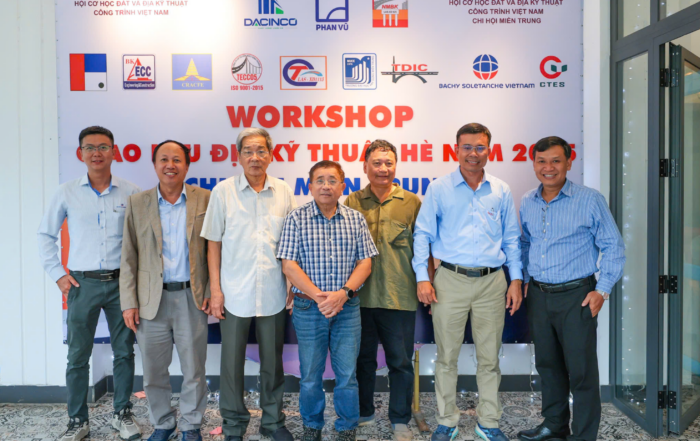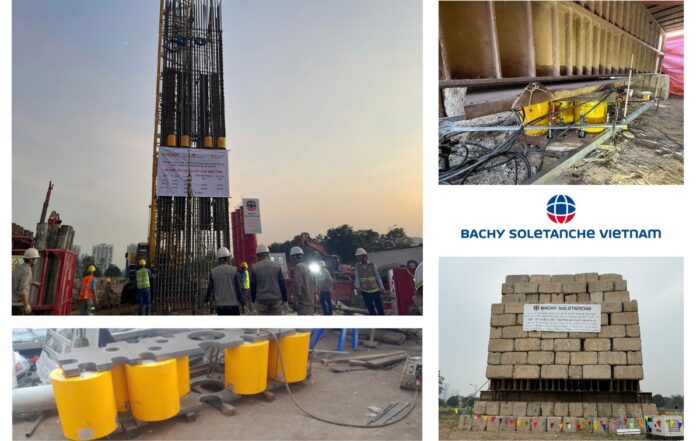With the current development of super high-rise buildings in Vietnam, Osterberg (O-cell) load testing is an indispensable static load testing solution for any construction company.
It was 20 years ago when Bachy Soletanche Vietnam first embarked on the O-cell load testing solution in the 27 Lang Ha project back in 2002. Guided by the experts of Soletanche Bachy since the very beginning, we built up our own experience in field.
Fast forward to today, about 20 projects around Vietnam have so far used this technique, with test loads going up to a whopping 10 900 tons. Even SEA’s tallest building, the super sky craper Landmark 81, applied 9 320 tons in its O-cell test for shaft grouted barrette test pile (1,0 x 2,8)m, 80m deep.
So, how does it work? O-cell works on the principle of balancing the pile shaft load capacity above and below the O-cell, as well as the pile toe’s load capacity.
But what makes the O-cell experiments performed by Bachy Soletanche Vietnam so successful?
To help transfer the jack load along the pile length, an I-section steel beam system is installed above and below the O-cell box. The I-section steel beam system is then transmitted evenly to the pile body to avoid damage to the pile due to the material (concrete right above and below the O-cell may not guarantee the synchronous quality).
However, selecting the elevation level to install on the O-cell itself needs calculated precision not everyone has the experience to do. But as a specialist of this field, BSV satisfies all conditions to become a professional Contractor in O-cell static load tests.









